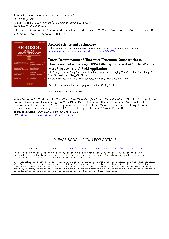摘要
In this work, plutonium aerosol generated from a plutonium reprocessing facility is filtered by a six-stage High Efficiency Particulate Air (HEPA) filter system and analyzed in laboratory within a week. Through on-line monitoring of number concentration of particles above 10 nm by a commercial condensation particle counter and off-line monitoring of (239)Pu activity concentration by (242)Pu isotope dilution Inductively-Coupled Plasma Mass Spectrometry (ICP-MS), it is confirmed that the HEPA filter system works properly during the field operation. Direct determination of plutonium aerosol by two types of ICP-MS, Finnigan ELEMENT ICP-MS and Nu MC-ICP-MS, has been conducted. The results show that the detection limits of ELEMENT and Nu for plutonium concentration are 5.0 x 10(-3) Bq/m(3) and 5.5 x 10(-4) Bq/m(3), respectively. Plutonium concentrations in the filtered gas samples are on the order of 2.0 x 10(-2) Bq/m(3) while the blank value is 5.7 x 10(-3) Bq/m(3). It's discovered that some plutonium nanoparticles have penetrated the six-stage HEPA filter system. This phenomenon is also observed in the repeated works of last two years. The size of the penetrated plutonium nanoparticles is investigated by ELEMENT in single particle mode. The preliminary results indicate that the penetrated plutonium nanoparticles are smaller than 10 nm and assume the form of (239)PuO(2).
- 出版日期2011
